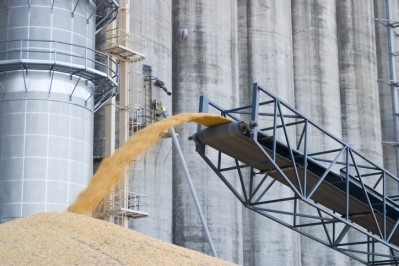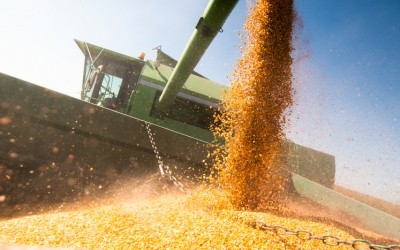US: Trade, weather, disease create a challenging 2019

The partial shutdown of the US federal government ended in late-January. Several departments, including the US Department of Agriculture (USDA), were shuttered, agricultural reports, including the World Agricultural Supply and Demand Estimate (WASDE) forecast in January 2019, were delayed and about 380,000 federal employees were furloughed from work.
Such a beginning was ominous, with the rest of the year seeing little relief from trade battles that began in 2018, said David Widmar, agricultural economist with Agricultural Economic Insights (aei). That insecurity continues as US agribusiness heads into 2020.
“We did not resolve much of the uncertainty on the plate that we had for global agriculture for 2019 – we are carrying that baggage with us,” he told FeedNavigator.
The outbreak of African Swine Fever (ASF) in China in 2018 also continued to play out in 2019, he said. “It’s spreading to more countries and the USDA’s latest estimate is that China will have another year of reduced production,” he added.
“Now we’re seeing concerns in Europe about the disease and we’re seeing it in other parts of Asia,” he said. “The other challenge is that it is intertwined with the trade war – both of these things are adverse trade factors.”
Although there has been a trade deal with Japan, that resolution is “a drop in the bucket with all the other challenges we’re facing,” Widmar said.
The revised trade agreement with Mexico and Canada (USMCA) has not yet passed through the US Senate and trade resolution efforts continue between Washington and Beijing.
“It is not the year to bury your head in the sand [however]. Contrary to how it feels, you should not pursue the ostrich strategy.”
Ending stocks
The late planting of feed crops and the below trend yield allowed the US to dodge “a massive bullet” with ending stocks, commented the agricultural economist.
From initial estimates of feed crop production, soybean ending stocks declined from record highs, he said. Feed grain stocks remain above average but are closer to previous levels.
“Even though we had massive adjustments in production, [and] commodity prices are a little higher, they are not massively higher,” he said. “Part of that was because we were at massively burdensome stocks at the start of the year and now we have a less burdensome situation… we have improved, but it was an improvement from a bleak situation to a less bleak situation.”
Producers were also at a loss as to how to determine what to plant as the trade war with China created uncertainty about crop flows.
In 2019, the USDA provided a second year of market facilitation payments (MFP) to support producers of feed and food crops along with some livestock species, but Widmar said the MFP remains an ad hoc program and is not guaranteed to be available to producers next year.
Weather conditions
Those payments were a great support through some of the trade and market challenges, reported Davie Stephens, president of the American Soybean Association (ASA), who bemoaned the weather conditions that hampered US feed crop production this year.
“It wasn’t something that was just geographically [centered], one state or a wet spot here and a dry spot there, it really encompassed the whole of the US from the Dakotas to Nebraska to the southern regions where you saw extreme flooding or extreme snow or just extreme conditions.”
Weather challenges have continued for producers, delaying harvests and leaving crops in the fields into December, he said. “We’re getting close to the end of the year and I think a lot of that will carry over into harvesting in 2020 – it’s not letting up,” he added, noting such developments bring problems for crop producers in terms of deciding what to plant and and in assessing their financial situation.
The late harvesting also creates issues around preparing fields for next year’s feed crops, Stephens said. Typically, November and December are used to do proactive work as the crop is out of the field.
“The last thing you want when planting season comes around is to have to harvest and plant a crop the same day,” he said.
Retaliatory tariffs
From a trade policy perspective, 2019 has been one of the tougher years in recent memory, said Floyd Gaibler, director of trade policy and biotechnology at the US Grains Council (USCG).
“It’s been driven by the retaliatory tariffs put in place by China, the EU and other countries – that’s made it difficult, and in some cases impossible, for our products to be competitive in those markets,” he said. “We’ve had recurring issues of non-scientific, asynchronous-biotech approvals.”
“The trade war effort has been the most disruptive,” he said. “It’s created tensions, uncertainty and it brings into question the ability to be reliable suppliers – that’s one of the biggest headwinds that we’ve been facing.”
The USGC has remained in contact with grain and agricultural product customers in China, he said. However, the notion that a trade deal would return the export market to exactly what it was prior to the tensions with Beijing is inaccurate.
Gaibler said: “It’s a challenge to lose market share and once you do lose it, it’s difficult to get it back – customers start making new relationships with new trading partners.”
The council spent much of 2019 on phytosanitary related talks with trading partners and pushing for ratification of the USMCA, he said. There have been a growing number of countervailing duty investigations into some US exports as well that have to be addressed.
“They’re unfair and they’re costly to defend,” he added.
However, there was a resolution of a World Trade Organization (WTO) investigation, which confirmed China had been providing excess support to some of its domestic grain producers, he said. “We’re looking to see what other provisions they put in place.”
Another positive note was the trade deal with Japan, Gaibler added.












